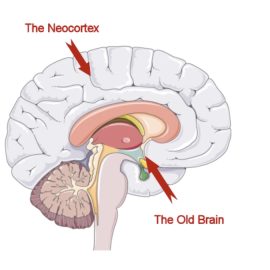

This article is an excerpt from the Shortform book guide to "Drive" by Daniel H. Pink. Shortform has the world's best summaries and analyses of books you should be reading.
Like this article? Sign up for a free trial here .
What are the two types of motivation? Which type of motivation is more sustainable?
In psychology, motivation is primarily categorized into two types: extrinsic and intrinsic. Intrinsic motivation is a natural, internal drive to engage in an activity, whereas extrinsic motivation is driven by external factors (e.g. financial rewards). While extrinsic rewards can motivate behavior in the short term, intrinsic motivation is more sustainable in the long term.
In this article, we’ll look at the psychology behind intrinsic and extrinsic motivation, and why intrinsic rewards are more sustainable in the long run.
Extrinsic vs. Intrinsic Motivation
Psychologists categorize behavior into two types:
- Type X behavior is driven by extrinsic desires and less by the intrinsic satisfaction of an activity. This is Motivation 2.0.
- Type I behavior is driven by intrinsic desires – autonomy, mastery, and purpose. This is Motivation 3.0.
People tend to be driven primarily by either Type X or Type I. Consider yourself – what gets you up in the morning and pushes you through the day? What motivates that colleague that seems like a continuous go-getter?
Organizations also tend to be driven primarily by either Type X or Type I motivation. Picture a strict, commission-based salesforce running on Type X, while a free-working company like Google leans more Type I.
Here are a few points about Type I behavior:
- Type I’s outperform Type X’s in the long term. While extrinsic rewards can fuel work in the short-term, they tend to exhaust as workers habituate to the reward. In contrast, intrinsic motivation can be self-sustaining and renewable over long periods of time.
- Type I behavior comes from both nature and nurture. Type I seems to be the natural state of most human beings (imagine the curiosity of a child), but Type X is forced upon us by the way we run our homes, our schools, and our workplaces.
- But there’s still hope – with education and the right environment, extrinsically motivated Type X’s can become intrinsically motivated Type I’s.
- Type I’s still care about money and recognition. You can’t expect Type I’s to work for free – they require a baseline compensation to remove money as a consideration point. But after a certain point, compensation is less a driver for Type I’s and more a form of recognition or feedback about performance.
- Type I’s have greater physical and mental health. Studies show that people who prefer autonomy and intrinsic motivation have higher psychological health and better relationships than Type X people. (Shortform note: It’s unclear whether this is correlation or causation. Healthier people may be in a better position to get more creative jobs that allow for more intrinsic motivation.)
Type X or Type I?
Think about different scenarios where you’re more of either of the two types of motivation (more Type X/extrinsic or more Type I/intrinsic).
Do you consider yourself more motivated by extrinsic rewards, or by intrinsic rewards? Describe why you believe this, maybe with a specific recent example.
Think about the environment in which you do most of your work, like your employer or school. Does this environment mainly emphasize extrinsic rewards or intrinsic rewards? How does this make you feel?

———End of Preview———
Like what you just read? Read the rest of the world's best book summary and analysis of Daniel H. Pink's "Drive" at Shortform .
Here's what you'll find in our full Drive summary :
- Why you may be feeling unmotivated and unsatisfied at work and in life
- Why financial rewards aren't enough to keep employees motivated anymore
- The three components of intrinsic motivation






